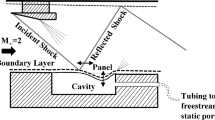Abstract
This paper describes the use of the impact-echo technique— a non-destructive testing technique based on the use of transient stress waves— for detecting delaminations in concrete plate-like structures such as bridge decks, slabs, and walls. Results obtained from numerical (finite element) analysis and controlled-flaw laboratory studies are presented and used to explain the elastic impact response of delaminated plates. Current impact-echo instrumentation is described, and results obtained from concrete bridge decks containing delaminations caused by corrosion of reinforcing steel are presented. These results provide a better understanding of the impact response of delaminated plates.
Resume
On décrit ici l’utilisation de la technique impact-écho-méthode d’essai non destructive basée sur l’utilisation d’ondes de pression acoustique transitoires-pour détecter les clivages dans des plaques de béton, telles que tabliers de pont, poutres et murs. On présente les résultats fournis par les méthodes numériques (élément fini) et l’étude en laboratoire sur éprouvette fissurée témoin, qui sont utilisées pour expliquer la réponse élastique à l’impact des plaques détériorées. On décrit l’appareillage courant et l’on expose les résultats obtenus sur des tabliers de ponts en béton qui présentent des clivages dus à la corrosion de l’armature. Ces résultats contribuent à mieux faire comprendre la réponse à l’impact de plaques détériorées.
Similar content being viewed by others
References
‘Concrete Bridge Deck Durability’, NCHRP Synthesis of Highway Practice 4 (Highways Research Board, National Academy of Sciences, Washington DC, 1970).
Mau, S. T. and Hsu, T. C., ‘Shear behavior of reinforced concrete frame wall panels with vertical loads”,Struct. J. Amer. Concr. Inst. 84 (May—June 1987) 228–234.
Sansalone, M. and Carino, N. J., ‘Detecting delaminations in concrete slabs with and without overlays using the impact-echo method”,Mater. J. Amer. Concr. Inst. 86 (March 1989) 175–184.
Pratt, D. and Sansalone, M., ‘Impact-echo signal interpretation using artificial intelligence’,ibid. 89(2) (1992) 178–187.
Sansalone, M. and Carino, N. J., ‘Impact-echo: a method for flaw detection in concrete using transient stress waves’, NBSIR 86-3452 (National Bureau of Standards, Gaithersburg, Maryland, 1986).
Idem.,, ‘Finite element studies of the impact-echo response of layered plates containing flaws’,Int. Adv. Non-destr. Testg 15 (1989) 313–336.
Carino, N. J., Sansalone, M. and Hsu, N. N., ‘Flaw detection in concrete by frequency spectrum analysis of impact-echo waveforms’,ibid. 12 (1986) 117–146.
Proctor, T., ‘Some details of the NBS conical transducer’,J. Acoustic Emission 1 (3) (1982) 173–178.
Sansalone, M., Pratt, D., Lin, Y., Cheng, C. and Lin, J., ‘Theory and Operation Manual for the Impact-Echo Field System, Volume 1’, Report No. 92-2 (Department of Structural Engineering, Cornell University, Ithaca, New York, 1992).
Hallquist, J. O., ‘DYNA3D User’s Manual’, Report No. UCID-19592, Rev. 5 (Lawrence Livermore National Laboratory, 1989).
Stillman, D. W. and Hallquist, J. O., ‘User’s manual for INGRID’, Report No. UCID-20506, revised July 1985 (Lawrence Livermore National Laboratory, 1985).
Brown, B. E. and Hallquist, J. O., ‘User’s Manual for TAURUS’, Report No. UCID-19392, Rev. 1 (Lawrence Livermore National Laboratory, 1984).
Mindlin, R., Schacknow, A. and Deresiewicz, H., ‘Flexural vibrations of rectangular plates’,J. Appl. Mech. (September 1956) 430–443.
Pratt, D. and Sansalone, M., ‘The Development of Instrumentation and Artificial Intelligence Software for an Automated Impact-Echo Field System’, Report No. 92-1 (Department of Structural Engineering, Cornell University, Ithaca, New York, 1992).
Lin, Y. and Sansalone, M., ‘Detecting flaws in concrete beams and columns using the impact-echo method’,Mater. J. Amer. Concr. Inst. 89(4) (1992) 394–405.
Lin, J. and Sansalone, M., ‘The transverse elastic impact response of thick hollow cylinders’,J. Non-destr. Eval. submitted.
Cheng, C. and Sansalone, M., ‘The effects on impact-echo signals caused by steel reinforcing bars and cracks around bars’,Mater. J. Amer. Concr. Inst. submitted.
Iyengar, K. and Raman, P., ‘Free vibration of rectangular plates of arbitrary thickness’,J. Sound Vibr. 52(2) 229–236 (1992).
Author information
Authors and Affiliations
Rights and permissions
About this article
Cite this article
Cheng, C., Sansalone, M. The impact-echo response of concrete plates containing delaminations: numerical, experimental and field studies. Materials and Structures 26, 274–285 (1993). https://doi.org/10.1007/BF02472949
Issue Date:
DOI: https://doi.org/10.1007/BF02472949




